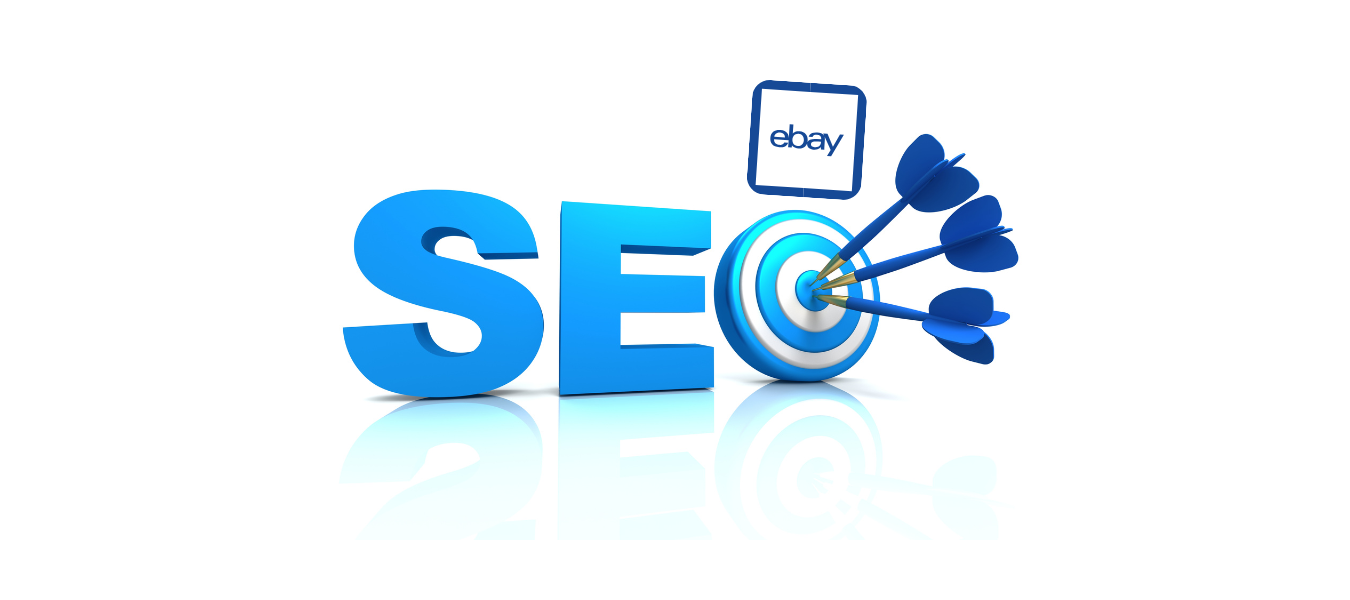



If you’ve been selling on eBay for a while, you know the frustration of watching your listings get buried beneath thousands of others. You’ve spent time crafting the perfect product page, uploaded great photos, and set a competitive price — yet somehow, your sales just aren’t where they should be. The problem? Your listings aren’t optimized for eBay’s search engine.
eBay is one of the largest online marketplaces in the world, but with over 1.5 billion active listings, competition is fierce. Simply having a great product isn’t enough — you need to make sure your listings actually show up when buyers search for them. That’s where eBay SEO (Search Engine Optimization) comes in.
Unlike Google, which ranks web pages, eBay uses its own search algorithm, called Cassini, to determine which listings appear at the top. Cassini considers several factors, including your listing title, item specifics, product description, price, shipping options, and seller reputation. If you’re not optimizing these elements correctly, your products could be virtually invisible to potential buyers.
But here’s the good news: eBay SEO isn’t as complicated as it sounds. With the right approach, you can boost your listings, improve their visibility, and get more clicks, more views, and — most importantly — more sales. This guide will walk you through everything you need to know about optimizing your eBay listings, from crafting compelling titles to improving your seller performance. Plus, we’ll show you how Mysellerhub can help automate and simplify the process, making your eBay business more efficient than ever.
Before we talk about optimization strategies, it’s essential to understand how eBay ranks listings in search results. Unlike Amazon, where customers are often looking for the lowest price, eBay’s algorithm prioritizes relevance and buyer experience over just price.
Cassini analyzes multiple factors to determine where your product appears in search results. These include:
Simply put, eBay rewards listings that make buyers happy. Your job is to create listings that look good, read well, and convert visitors into customers.
Now that we know how eBay ranks products, let’s go step by step through the best ways to sell on eBay, optimize your eBay listings and climb the search rankings.
Think of eBay as a giant library. If a buyer is searching for “wireless earbuds” and your listing just says “Bluetooth headphones”, there’s a good chance you’ll miss out on potential sales. That’s because eBay prioritizes exact keyword matches when deciding which listings to show.
So how do you find the best eBay keywords?
Start typing a product name into eBay’s search bar, and you’ll notice it suggests terms based on what people are actively searching for. These auto-suggestions are gold when it comes to finding popular and relevant keywords for your listing.
Search for products similar to yours and analyze the top-ranking listings. What keywords are they using in their titles and descriptions? If you see patterns, those are likely high-performing search terms. But be careful — keyword stuffing (unnatural overuse of keywords) can actually hurt your ranking.
eBay doesn’t provide keyword volume data, but tools like Mysellerhub’s built-in AI help you craft high-ranking title and description options for your products, so they would be optimized for maximum visibility.
As we already know, an eBay listing title is one of the most important factors in determining where your product ranks in search results. Think of it like a headline — if it’s not optimized by proper keywords, buyers won’t click on it. And if buyers don’t click on your listing, eBay assumes it’s not relevant and pushes it down in search results.
A great title is concise, keyword-rich, and structured in a way that makes sense to buyers. eBay gives you 80 characters for a reason — use them wisely!
To craft a strong title, think like a buyer. If you were searching for this product, what words would you type into the search bar? Include the most important details first, so they appear even on mobile search results.
For example, let’s say you’re selling a pair of Nike running shoes. A weak title might look like this: “Nike Shoes Size 10 – Great Deal – Free Shipping”. This title wastes valuable space and doesn’t give buyers enough detail. A much better version would be: “Nike Air Max 90 Men’s Running Shoes – Size 10 – Red & White – Lightweight”.
This title is optimized because it includes:
One of the biggest mistakes sellers make is ignoring item specifics. These fields — such as brand, color, material, size, model, and condition — are not just optional details. They directly impact how your listings appear in filtered search results.
Buyers often use eBay’s filters to narrow down their options, especially when searching for items like clothing, electronics, or collectibles. If you haven’t filled out these details, your listing may not even show up when buyers refine their search!
For example, if a buyer searches for “Men’s Nike Running Shoes Size 10” and you didn’t include the size or brand in the item specifics, your listing won’t appear in their filtered results — even if your title includes those details.
The more accurate and complete your item specifics, the better your chances of ranking higher in search results. Plus, providing more details helps buyers make confident purchasing decisions, reducing returns and increasing customer satisfaction.
Check out our comprehensive guide to be sure you avoid these common mistakes eBay sellers make.
Once a buyer clicks on your listing, the item description must provide enough information to secure the sale. A strong product description should be informative, well-structured, and easy to read. Buyers want to know exactly what they are purchasing, so clarity and transparency are essential.
A well-optimized description should start with a short but compelling introduction that highlights the key benefits of the product. Using bullet points to outline specifications such as size, weight, material, and features can enhance readability. However, the bulk of the description should be in paragraph format, providing details in a natural flow. Honesty is key — if an item has imperfections, clearly state them to manage buyer expectations and reduce return rates.
For instance, a well-optimized description for a smartphone might read: “This Apple iPhone 13 Pro Max 256GB is factory unlocked and compatible with any carrier. Featuring a stunning 6.7-inch Super Retina XDR display and a powerful A15 Bionic chip, this device delivers top-tier performance. It is in excellent condition with minimal wear and comes with its original box and charger. Enjoy fast and free shipping on your order!”
Including relevant keywords naturally throughout the description can further boost SEO without making the content feel forced or spammy.
Photos are just as important as text when it comes to eBay SEO. eBay prioritizes listings with high-quality images because they increase buyer engagement. The longer a buyer stays on your listing and interacts with your content, the higher the chances that Cassini algorithm sees your listing as relevant and pushes in search results — it’s that simple.
eBay recommends using at least 6-12 high-resolution images per listing. Buyers want to see the product from multiple angles, zoom in on details, and get a clear sense of what they’re purchasing.
Here’s how to optimize your images:
If you’re selling used or pre-owned items, remember to be honest about imperfections.
While pricing isn’t directly part of eBay’s SEO algorithm, it still plays a crucial role in conversion rates and overall sales performance, and here’s why.
Sellers should set the right balance between competitiveness and profitability. Pricing too high could drive buyers to your competitors, while pricing too low might cut into your margins and make your business unsustainable.
So, how do you get it right?
First of all, start with market research. Search for similar products on eBay and analyze how other sellers are pricing them. Look at high-ranking listings and note whether they offer discounts, free shipping, or bundles. If a product like yours is consistently selling at a certain price point, that gives you a solid benchmark.
But pricing isn’t just about competition — it’s about making sure your business stays profitable, right? Factor in eBay fees, shipping costs, supplier pricing, and taxes to ensure you’re not undercutting yourself. eBay store subscribers, for example, pay different monthly fees depending on their seller tier, so these costs should be included in your pricing strategy.
One powerful way to increase your average order value is by offering volume discounts. Let’s say you’re selling socks at $2 per pair. Instead of selling one pair at a time, you could offer a discount for bulk purchases — five pairs for $8 instead of $10. Buyers love getting a deal, and you benefit from selling more in a single transaction. It’s a win-win.
Never undervalue your product — another point to keep in mind. Low prices may attract buyers, but they can also make your products appear low-quality. If you’re running promotions, be strategic — eBay offers tools to calculate profits when applying discounts, so use them to ensure your sales strategy boosts revenue without slashing margins.
Finally, pricing should be fluid, not static. The market changes, and your pricing should adjust accordingly. Keep an eye on demand, seasonality, and competitor moves, and tweak your pricing as needed. The key is staying competitive while maintaining healthy profit margins — this is what will keep your eBay business thriving in the long run.
Your shipping and return policies might not seem like a big deal, but they can directly impact both sales and search rankings on eBay. Buyers prefer fast shipping and flexible returns, and eBay rewards sellers who offer them.
If you can, provide free shipping — it increases conversions and helps boost visibility. If that’s not an option, focus on fast and affordable shipping rates. Dropshippers should work with suppliers that offer quick fulfillment and reliable tracking, while sellers managing inventory should choose trustworthy carriers like USPS, FedEx, or UPS to keep deliveries smooth.
Returns are just as important. A clear and fair return policy reassures buyers and can make them more likely to complete a purchase. A 30-day return window is often a sweet spot — buyers feel secure, but it also discourages unnecessary returns. Even if you’re not offering free returns, make the process simple and transparent to build trust and reduce disputes.
Leveraging tools like Mysellerhub, sellers can easily automate order management and streamline returns, ensuring seamless transactions and higher visibility on eBay.
At the end of the day, a smooth shipping and return experience isn’t just about keeping customers happy — it’s about keeping eBay happy too. Sellers with strong fulfillment and customer service often get better visibility, higher ratings, and more repeat buyers.
Optimizing your eBay listings is an ongoing process. It’s not a “set it and forget it” kind of thing. Success on eBay is a combination of great products, optimized listings, and excellent customer service.
At Mysellerhub, we’re here to support you every step of the way. Whether you need tools, resources, or expert advice, we’ve got you covered — sign up to Mysellerhub right now or contact us to get more details. Stay informed about eBay’s latest features and updates, and don’t hesitate to experiment with different approaches to find what works best for your unique business.
Happy selling!





